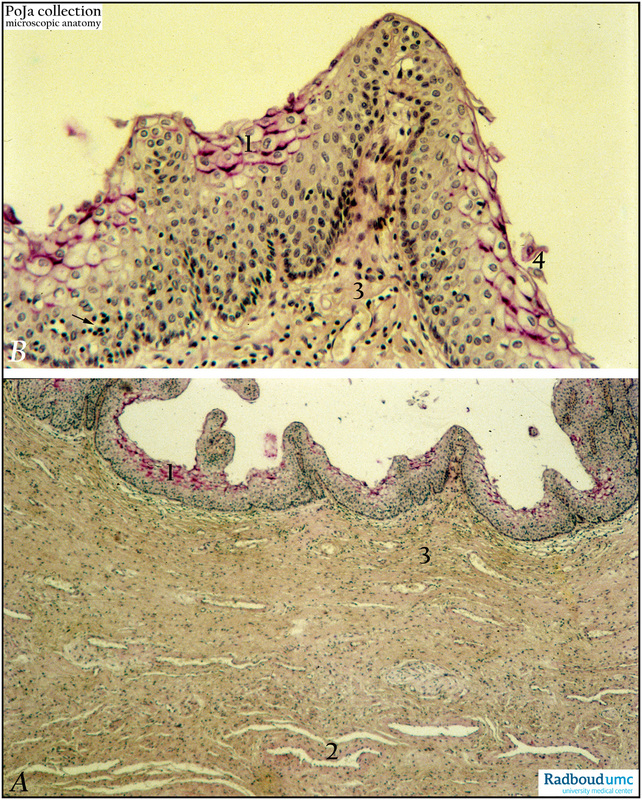7.2 POJA-L1372+1373
Title: Vagina (human, adult)
Description: Stain: Periodic acid Schiff (PAS).
(A): Note present of glycogen(1) in the upper layers of the epithelium (non-keratinized stratified squamous epithelium or NKSSE) and extensive venous plexus (2) within the proper lamina (3).
(B): Higher magnification of the NKSSE shows in swollen transparent superficial cells reddish-stained glycogen (1) (due to methanol-containing fixatives part of the glycogen is dissolved and the remnants are pushed basally). Intraepithelial lymphocytes (→); (3) proper lamina. At (4) shed glycogen containing surface squames under the influence of progesterone during the early secretory period of the menstrual cycle.
Background: In response to estrogen stimulation the amount of glycogen increases and is maximal at the time of ovulation. Toward the end of the cyclus the amount decreases.
Keywords/Mesh: female reproductive organs, vagina, glycogen, squames, menstrual cycle, PAS, squamous epithelium, histology, POJA collection.
Title: Vagina (human, adult)
Description: Stain: Periodic acid Schiff (PAS).
(A): Note present of glycogen(1) in the upper layers of the epithelium (non-keratinized stratified squamous epithelium or NKSSE) and extensive venous plexus (2) within the proper lamina (3).
(B): Higher magnification of the NKSSE shows in swollen transparent superficial cells reddish-stained glycogen (1) (due to methanol-containing fixatives part of the glycogen is dissolved and the remnants are pushed basally). Intraepithelial lymphocytes (→); (3) proper lamina. At (4) shed glycogen containing surface squames under the influence of progesterone during the early secretory period of the menstrual cycle.
Background: In response to estrogen stimulation the amount of glycogen increases and is maximal at the time of ovulation. Toward the end of the cyclus the amount decreases.
Keywords/Mesh: female reproductive organs, vagina, glycogen, squames, menstrual cycle, PAS, squamous epithelium, histology, POJA collection.

